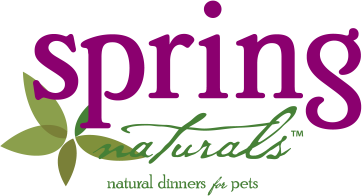
Hidden Dangers of Certain Essential Oils To Your Pet’s Health
(Dr. Iulia Mihai, DVM) Essential oils have gained popularity over the years for their health benefits in humans. However, it is important to note that some of them are dangerous to pets. Health problems can occur when dogs and cats walk through essential oils, have them applied directly to their skin, ingest or inhale them, or have them on their fur by accident. Many pet owners are not aware of the potential dangers these oils may pose.
The most toxic to pets are eucalyptus, tea tree, cinnamon, citrus, peppermint, pine, wintergreen, and ylang-ylang essential oils. These are toxic to our dogs and cats whether they are applied directly to their fur, licked off the floor, or used in diffusers.
Why Essential Oils Can Be Harmful to Pets?
Essential oils can have a lot of benefits for humans, including calming effects. However, many are toxic to pets. Some can even cause life-threatening problems.
Essential oils contain bioactive compounds such as terpenes, terpenoids, and phenols, which are responsible for many of their biological effects, including antimicrobial and anti-inflammatory properties. Pets metabolize substances differently than humans. Therefore, they won't be able to break down these substances in the same way we do. For example, cats lack glucuronyl transferase, a liver enzyme that helps break down the compounds found in essential oils. So, the toxic compounds can build up in their systems and cause severe damage because their bodies physically cannot process these compounds the same way.
Exposure to essential oils can occur in several ways:
-
Direct skin contact
-
Inhalation of diffused oils
-
Accidental ingestion
-
Passive exposure (in a room with a diffuser)
Some dog or cat owners apply essential oils directly to their pet's fur or paws, believing it is beneficial. Understanding how pets' bodies work compared to humans will help avoid unintentional poisoning in the future and ensure their safety.
Which Essential Oils Are Toxic to Pets?
There are a large number of essential oils that are toxic to pets, some being more toxic than others. Here is a list of essential oils toxic to pets. However, this list is not exhaustive:
Narrow-leaved paperbark – it contains monoterpenes and sesquiterpene and can be potentially toxic to cats.
Clove – it contains phenols and can be toxic to pets if ingested in large quantities or if applied undiluted on their skin.
Pennyroyal – toxic to cats and dogs, especially if ingested.
Ylang-ylang – cats are particularly at risk when exposed to this essential oil. Dogs are also at risk, especially when they come into contact with concentrated forms.
Peppermint – has a medium to high toxicity and can cause severe health issues.
Cinnamon – it can be toxic to cats and dogs if used in high concentrations.
Sweet birch – it contains methyl salicylate and it is toxic to pets, especially cats.
Wintergreen – it contains methyl salicylate and it is toxic to pets, especially cats.
Citrus – it contains monoterpene hydrocarbons (limonene), which can be toxic to pets, especially cats. Linalool and d-limonene have insecticidal properties, and can cause liver toxicity when ingested.
Lavender – it has mild to moderate toxicity in concentrated forms or with prolonged exposure. Cats and small dogs are more sensitive.
Pine – it contains monoterpenes, which can be harmful when ingested or absorbed through the skin. It is toxic to pets, especially cats.
Thyme – cats are more sensitive to thyme essential oil than dogs. It has a high concentration of phenols, particularly thymol.
Oregano – it contains carvacrol and thymol, which can be toxic for pets, especially in large amounts.
Anise – it contains phenols, which are toxic for pets, especially cats.
Garlic – it is highly toxic to pets. It contains compounds like thiosulfate and allyl disulfide, which can damage red blood cells and lead to serious health issues.
Geranium – contains linalool and geraniol, being toxic to pets if ingested or exposed to it.
Juniper – it is toxic to pets if ingested or exposed to it.
Lemongrass – it can be toxic to cats and dogs, depending on the amount and type of exposure.
Rosemary – it has low to moderate toxicity, depending on the amount.
Eucalyptus – it is considered particularly toxic to pets. It can be very dangerous when inhaled, ingested, or applied to the skin.
Symptoms of Essential Oil Poisoning in Pets
Never give essential oils to your dog or cat without first speaking to a veterinarian. Essential oils at 100% concentration are much more toxic to pets and can lead to poisoning or other internal organ problems. Also, keep in mind that symptoms may vary depending on the type of essential oil, the amount of exposure. The size and species of your pet can play a role in toxicity. Cats are much more sensitive to essential oils than dogs. If you are concerned that your pet has been exposed, monitor them for clinical signs. Here are some signs you might notice:
-
Drooling (most common)
-
Gastrointestinal signs (vomiting and diarrhea - most common)
-
Lethargy
-
Weakness
-
Tremors and muscle twitches
-
Incoordination (ataxia)
-
Respiratory problems (coughing, wheezing, or panting)
-
Pawing at the mouth or face
-
Depression
-
Hypothermia or fever
-
Seizures (in severe cases)
-
Coma or death (in extreme toxicity)
If you suspect your pet has ingested, stepped in, or was exposed to essential oils, contact the veterinarian as soon as possible, especially if they show any signs of poisoning. Clinical signs can escalate quickly and can lead to kidney or liver damage, seizures, and even death.
Are Some Oils More Dangerous Than Others?
Yes, some essential oils can be more harmful to dogs and cats than others. The toxicity of an essential oil to pets depends on several factors:
-
The type of essential oil – for example, tea tree oil, pennyroyal, and eucalyptus can cause liver and kidney damage, while others only cause digestive signs (vomiting, diarrhea).
-
The concentration level and what the product is mixed with – some oils, such as tea tree, can lead to poisoning with as little as 7-8 drops, while others require more or less.
-
The type of exposure – for example, some essential oils can be okay if diluted and applied to the skin but very toxic if ingested.
-
The pet's species – cats are much more sensitive to essential oils while dogs tolerate them better.
Ensuring A Safe Environment For Your Pets
Pets are sensitive to essential oils. While they offer benefits to humans, they can pose significant risks if ingested, inhaled, or applied on the skin of dogs or cats. Some essential oils, even in small amounts, can lead to severe clinical symptoms such as respiratory difficulties, gastrointestinal problems, or even organ failure (e.g., tea tree, eucalyptus, and pennyroyal). Therefore, pet safety should be a priority when it comes to household products.
It is the owner's responsibility to ensure that products are kept out of the prying eyes of their pets and reach and that, in the event of an accident, to contact their veterinarian immediately. The clinical signs you may see in most cases are vomiting, diarrhea, and hypersalivation. Depending on the toxicity level of the essential oil, you may also notice difficulty breathing, coughing (especially if inhaled), panting, lethargy, weakness, and even nervous signs. In severe cases, your dog or cat may have seizures and even die. Keep in mind that clinical signs can escalate quickly, so it is advisable to contact your veterinarian as soon as you suspect an accident occurred.
In addition, you should always contact your veterinarian when you are unsure whether a product is safe for your pet.
Iuliana graduated from the University of Agronomical Sciences and Veterinary Medicine in 2012, Romania. She has a Master’s degree in Small Animal and Equines Pathology and a strong affinity for Veterinary Parasitology and Laboratory. In 2013 she started her Ph.D. in epithelial cancer in dogs and cats. She volunteered at the faculty’s clinic in her 3rd year of study, and continued her career in small animal pathology and laboratory. She has one cat and eleven rats. Her interests outside of work include traveling, writing, and crafting.

Post a Comment!